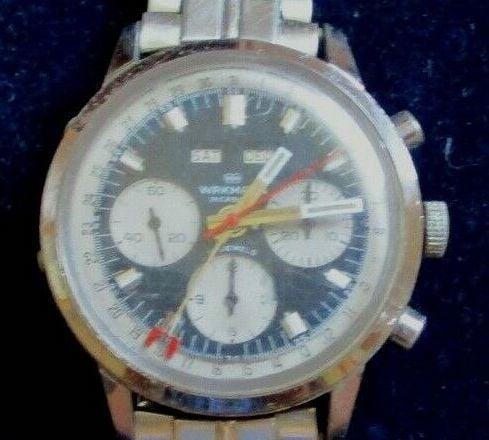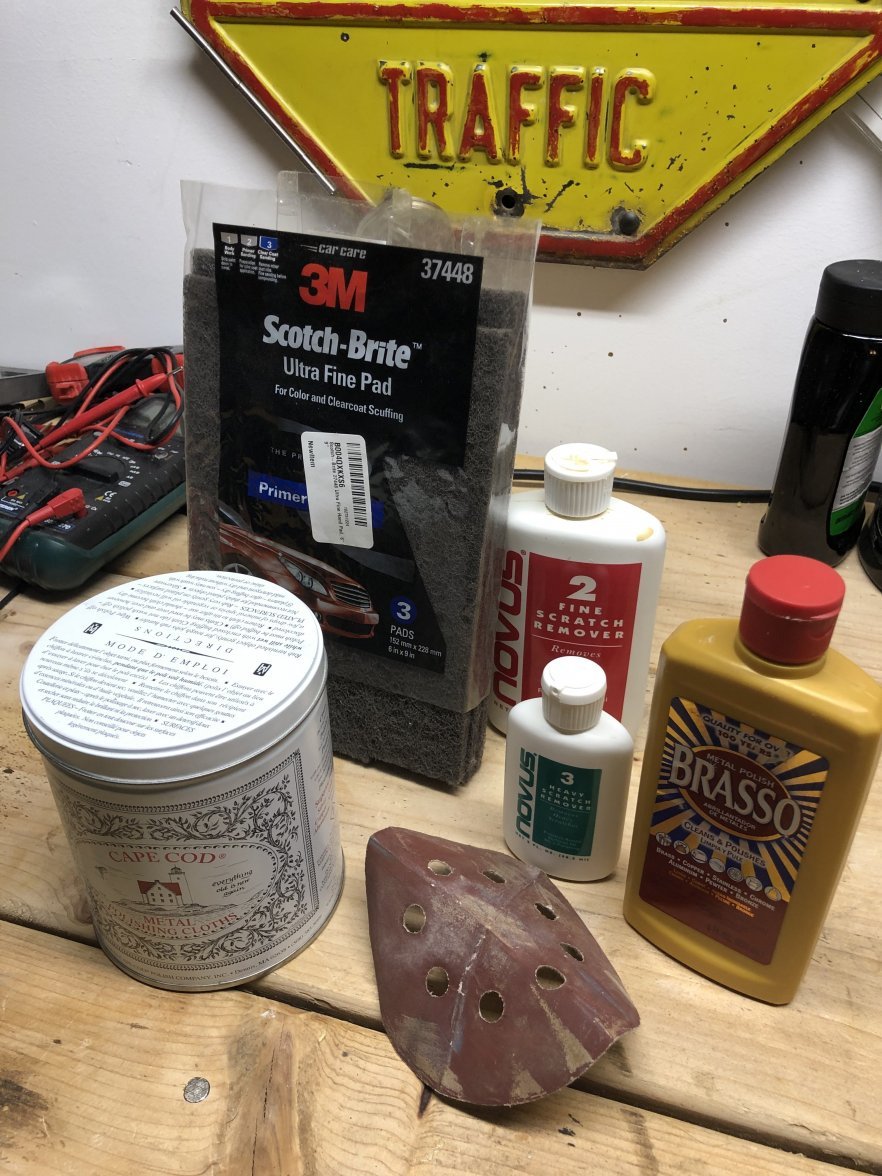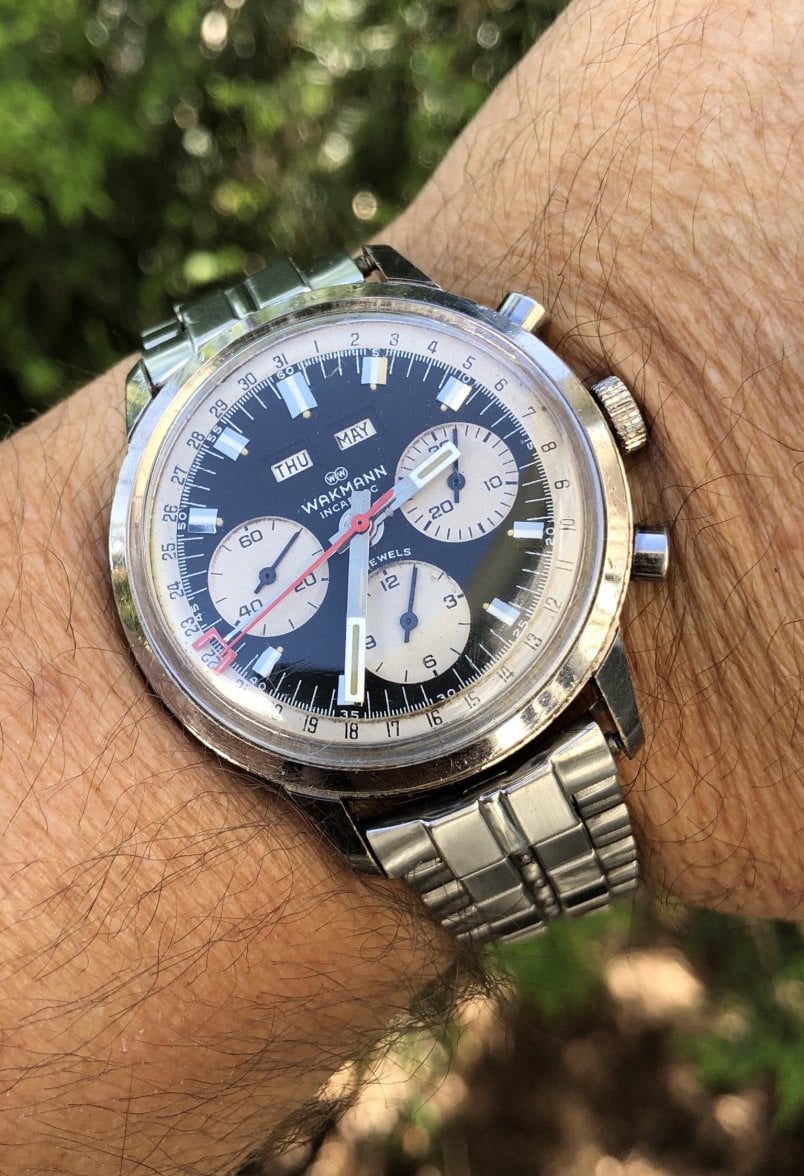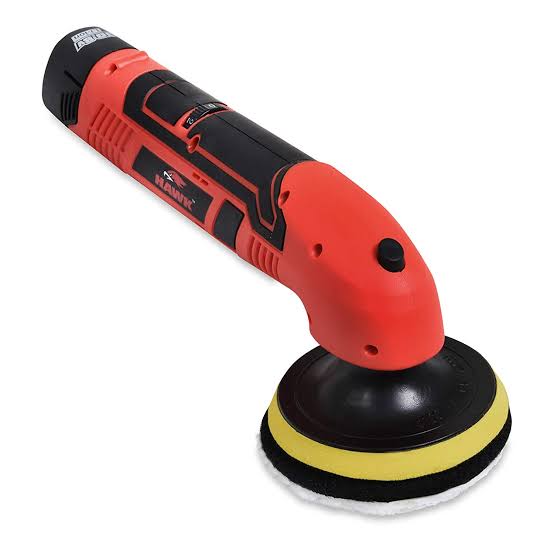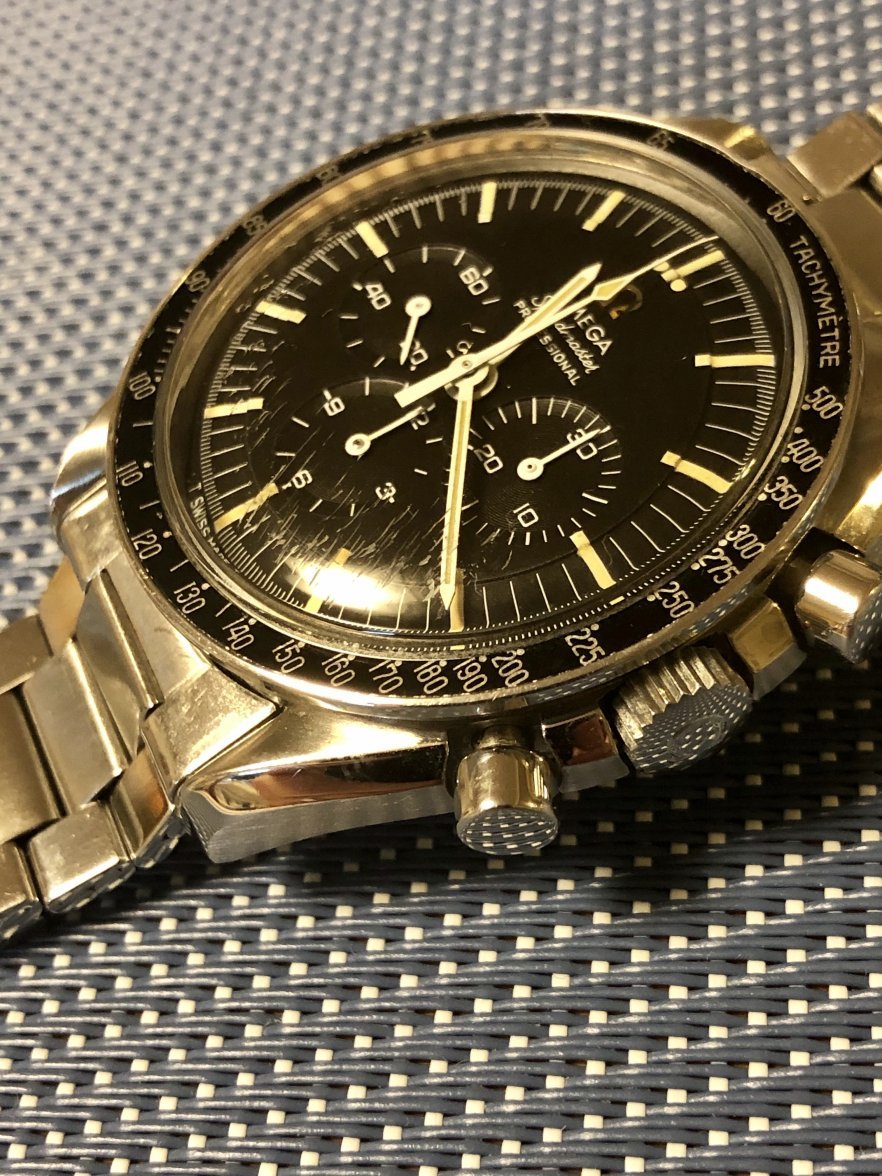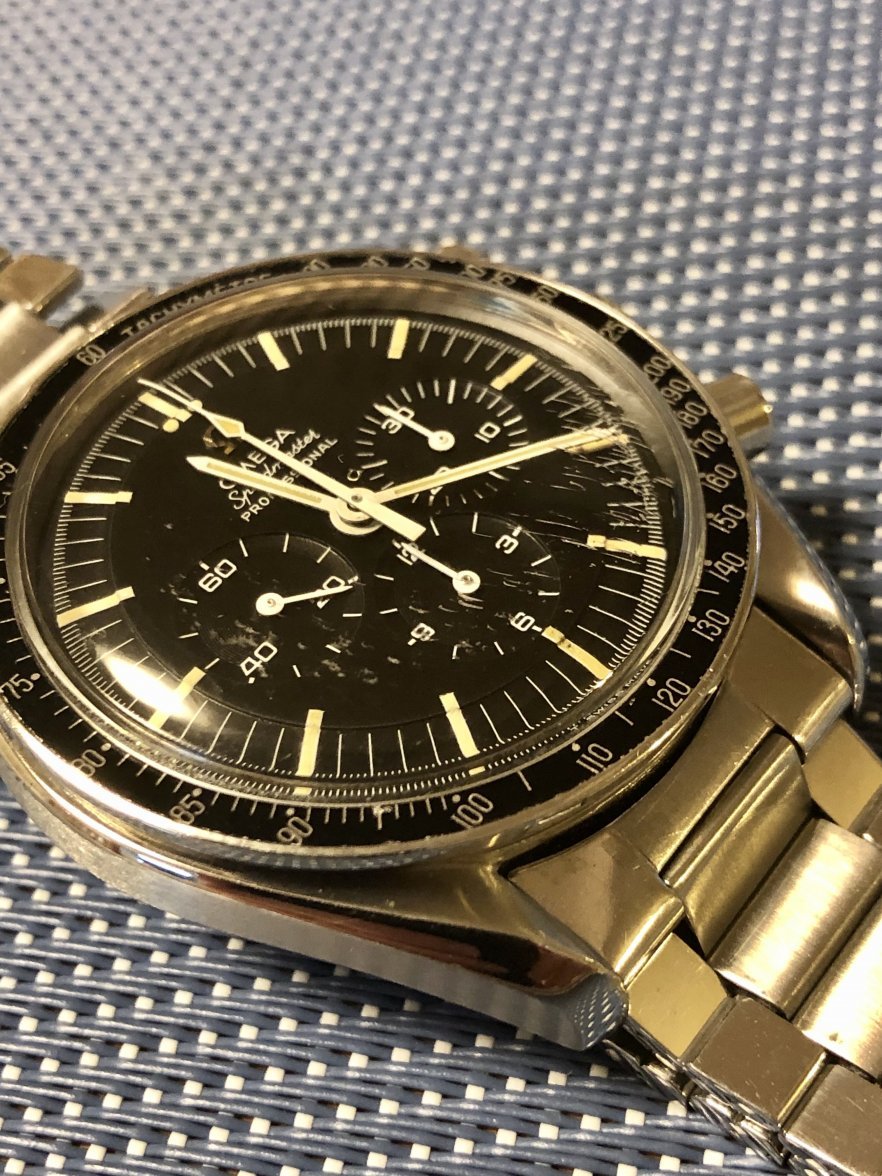Swissmister
·We all encounter badly scratched crystals from time to time, and in some cases it is best to replace a badly damaged crystal, but in my experience, if it's not cracked or crazed (scads of tiny crack-like lines) it can be saved. So if you have a watch with a crystal that is difficult to replace and/or difficult to find, here are some tips for bringing back a badly scarred crystal (or not-so-badly scarred).
1. For light scratches, (the kind you cannot feel when you run your fingernail over them) the usual polishes will do the trick. I know many love poly watch, but I find it unnecessarily expensive. I recommend Novus plastic polishes instead. These come in 3 "grits." I find number 2 is great for light scratches and never really found a need for number 1, a super fine finishing polish. And yes, toothpaste will work on the lightest of scratches.
2. Now, of course, any polish will work if you are willing to spend hours polishing, but most of us would prefer to get on with our lives. For scratches that are a bit deeper, the kind you can feel with the edge of a fingernail, more aggressive measures are needed. My next choice is the scotch-brite ultra fine pad. I know, it is meant for metal polishing, as are a few of the products I will suggest. At this, already some of you are thinking, "This guy has been wearing Endura watches too long." It may seem counter-intuitive, but sometimes one must create more scratching in order to remove deeper scratches. This method will remove all but the deepest scratches. Cut a small piece and polish the scratched area until it appears the offending scratch is gone. Yes, you have created a larger ugly area now, but trust me, it's ok. At this point you have options. I have used liquid brasso (smells AWFUL) to do this rough polishing. More recently I have tried cape cod cloth with great success as an intermediary polish. You could even go to Novus number 3 (heavy scratch polish) at this point, but I'd save that for the next step. I know, Brasso and Cape Cod are metal polishes. They work. Much of my plastic polishing has been done on vintage turntable dustcovers, and Brasso has done very well as an in-between step. Now you should have your work area down to light and very light scratches. Now use the Novus number 3 if you have it. It will save time rather than polishing for 30 mins with a lighter polish like Novus 2 or Polywatch. After a few minutes with Novus 3, you should be ready for final polishing with Novus 2, 1 or Polywatch (even toothpaste).
3. I recently received a watch that had been abused, and some of the scratches were very deep, more like gouges in some cases. These may be so deep that you can easily feel them by running your finger over them. These would require many hours of hard work with liquid polish, and even with scotch brite they would be exhausting. This is when sandpaper is needed. Yes, sandpaper. The more squeamish among you may flee at this point. I understand. It may be that the gouge is too deep and would require the removal of too much material. In that case, you will need to replace the crystal, but in most cases, you can remove the damage. I will include a couple of before and afters from the most recent project. It had 3 or 4 very deep gouges. DO NOT use heavy grit sandpaper. I recommend 800 or 1000 grit. If the crystal needs more than that, it is likely finished. Fold your paper down to a size that is manageable for small areas, (and you may want to use masking tape on the nearby metal surfaces, which is not a bad idea when doing any polishing of the crystal) and begin sanding the deep scratches. You will begin to see progress and material being removed. Do not be too aggressive. Use only enough pressure to do the job. When you think the scratch is gone, proceed with step 2 above beginning with scotch brite and on to the polishing. From time to time, examine the area with magnification. You may find you did not remove the deepest part of the scratch. Go back with the sandpaper and remove a bit more then on to step 2.
Using this method, nearly any scratch/gouge can be removed. It might be wise to experiment on a lesser watch until you feel comfortable. Below are a few photos showing the products and the before and after of the crystal I recently "sanded."
1. For light scratches, (the kind you cannot feel when you run your fingernail over them) the usual polishes will do the trick. I know many love poly watch, but I find it unnecessarily expensive. I recommend Novus plastic polishes instead. These come in 3 "grits." I find number 2 is great for light scratches and never really found a need for number 1, a super fine finishing polish. And yes, toothpaste will work on the lightest of scratches.
2. Now, of course, any polish will work if you are willing to spend hours polishing, but most of us would prefer to get on with our lives. For scratches that are a bit deeper, the kind you can feel with the edge of a fingernail, more aggressive measures are needed. My next choice is the scotch-brite ultra fine pad. I know, it is meant for metal polishing, as are a few of the products I will suggest. At this, already some of you are thinking, "This guy has been wearing Endura watches too long." It may seem counter-intuitive, but sometimes one must create more scratching in order to remove deeper scratches. This method will remove all but the deepest scratches. Cut a small piece and polish the scratched area until it appears the offending scratch is gone. Yes, you have created a larger ugly area now, but trust me, it's ok. At this point you have options. I have used liquid brasso (smells AWFUL) to do this rough polishing. More recently I have tried cape cod cloth with great success as an intermediary polish. You could even go to Novus number 3 (heavy scratch polish) at this point, but I'd save that for the next step. I know, Brasso and Cape Cod are metal polishes. They work. Much of my plastic polishing has been done on vintage turntable dustcovers, and Brasso has done very well as an in-between step. Now you should have your work area down to light and very light scratches. Now use the Novus number 3 if you have it. It will save time rather than polishing for 30 mins with a lighter polish like Novus 2 or Polywatch. After a few minutes with Novus 3, you should be ready for final polishing with Novus 2, 1 or Polywatch (even toothpaste).
3. I recently received a watch that had been abused, and some of the scratches were very deep, more like gouges in some cases. These may be so deep that you can easily feel them by running your finger over them. These would require many hours of hard work with liquid polish, and even with scotch brite they would be exhausting. This is when sandpaper is needed. Yes, sandpaper. The more squeamish among you may flee at this point. I understand. It may be that the gouge is too deep and would require the removal of too much material. In that case, you will need to replace the crystal, but in most cases, you can remove the damage. I will include a couple of before and afters from the most recent project. It had 3 or 4 very deep gouges. DO NOT use heavy grit sandpaper. I recommend 800 or 1000 grit. If the crystal needs more than that, it is likely finished. Fold your paper down to a size that is manageable for small areas, (and you may want to use masking tape on the nearby metal surfaces, which is not a bad idea when doing any polishing of the crystal) and begin sanding the deep scratches. You will begin to see progress and material being removed. Do not be too aggressive. Use only enough pressure to do the job. When you think the scratch is gone, proceed with step 2 above beginning with scotch brite and on to the polishing. From time to time, examine the area with magnification. You may find you did not remove the deepest part of the scratch. Go back with the sandpaper and remove a bit more then on to step 2.
Using this method, nearly any scratch/gouge can be removed. It might be wise to experiment on a lesser watch until you feel comfortable. Below are a few photos showing the products and the before and after of the crystal I recently "sanded."
Edited:
